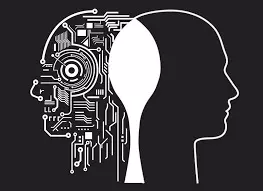Combining Human Intelligence with AI & Machine Learning
image for illustrative purpose

Over the past few decades, collaboration between humans and artificial intelligence has been a breakthrough in research in various fields. Machine learning (ML) is the core since it allows AI systems to learn from data and improve results without further rules developed for this purpose.
The Conceptual Advancement in the Use of Machine Learning in AI Research
Pattern recognition is one of the fundamental facets of Artificial Intelligence and handling big data is conducted through machine learning. This has brought drastic changes in research methodologies since it automates data analysis, predictions, and decisions. With more industries adopting ai and ml courses for upskilling, researchers can also incorporate the use of AI into their research to make the processes more efficient.
Improvements in Health Care Research
In the healthcare area, researchers have made some of the most significant uses of ai and ml courses. AI applications have become integrated into medicine as both diagnostic and treatment tools & to monitor patients’ conditions. By utilizing medical images, AI can diagnose illnesses including cancer with high efficiency, even in their early stages.
In addition, AI models are available for prognostication and designing treatment sensitivities that reach a patient’s data. For instance, in oncology, an AI system draws the patient's history, and his/her genes, and associates the best procedures with efficacious treatment patterns. Today, titans of every professional stream interested in healthcare research enroll in ai and ml courses to benefit from the advanced technological developments to augment AI in medical practices better.
Climate Science and Environmental Research Using Artificial Intelligence
Another important application of machine learning is in climate science, which is a third major benefactor of modern research. Machine learning helps climatologists estimate global changes, regard climate changes, and predict the changes in weather conditions. These models allow the researcher to provide better estimates and advice for putting in place measures to reduce the impact of the effects on the environment.
The Conceptual Advancement in the Use of Machine Learning in AI Research
Pattern recognition is one of the fundamental facets of Artificial Intelligence and handling big data is conducted through machine learning. This has brought drastic changes in research methodologies since it automates data analysis, predictions, and decisions. With more industries adopting ai and ml courses for upskilling, researchers can also incorporate AI into their research to make the processes more efficient.
When it is trained, it can analyze data at a much faster rate than would be possible for a human to do over the same data. For example, in drug discovery and genomics, it is possible that in one or two weeks, using an ML algorithm, you look at billions of sequences that may take a scientist ages to go through. This greatly shortens the time required to hone in on the principal genes involved with particular diseases, or indeed the time it takes to find new drug candidates.
Importance to the Ethicality of AI-Based Research
A constant introduction of AI to research also has some ethical issues that should be faced. If AI and ML are becoming smarter, then problems such as data protection, algorithms used, and the responsibility of AI lie in the future. From these novel AI systems, researchers have to make certain that developed and employed AI systems would be fair, responsible, and transparent.
First of all, most machine learning is trained on big data samples and contains some biases or errors. If these biases go untreated then the AI system circulates them and conclusions are skewed or unfair. Ethical education has thus become mandatory in ai and ml courses and is focused on the balance in AI technologies.
Conclusion
The use of human-machine learning interaction has been the key factor in developing improved innovation in many disciplines. Ranging from the medical industry, climate research, and engineering have adopted AI and ML to address difficult issues. So the expertise in AI & ML also rises parallel to the number of courses done by professionals so, the deployments and uses of these technologies have endless possibilities. AI and ml courses allow individuals with a drive & hunger for quality education to achieve new heights in their respective careers.
Only if responsible approaches for AI development are encouraged and human knowledge feeds into those AI systems, people can reap the maximum advantages. AI and ML are now entrenched in the research processes, and the integration of the two technological tools will only increase in the future opening up new possibilities in science and other fields.

